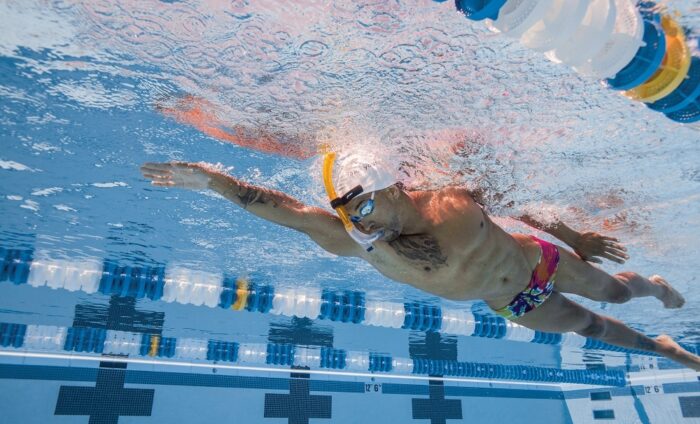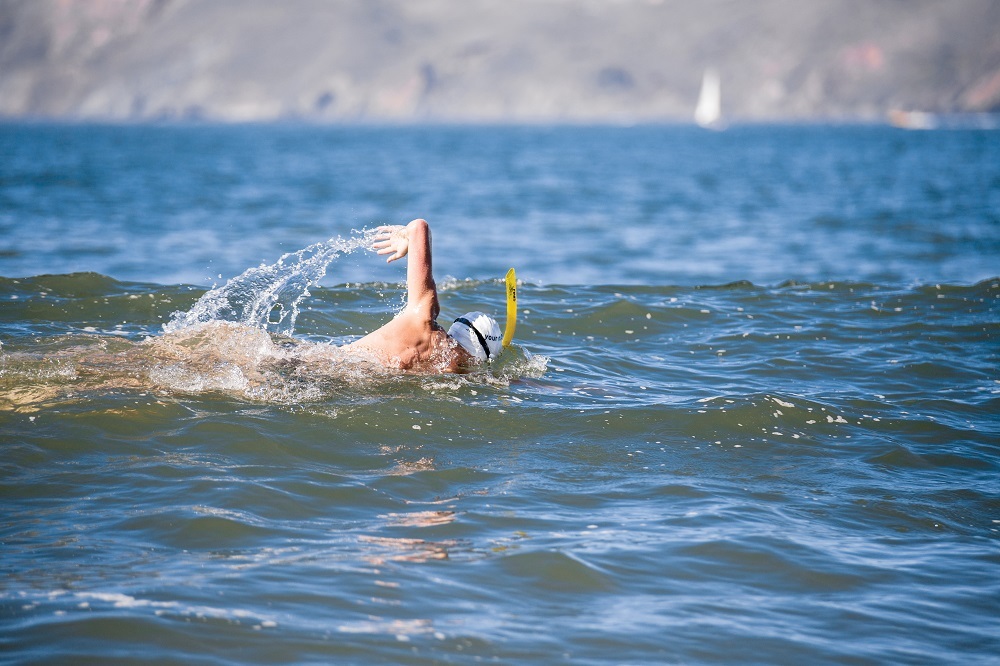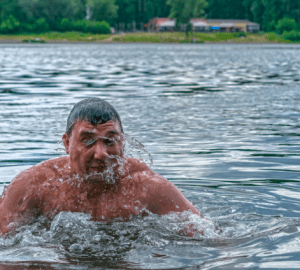
Improve your swimming with a central snorkel
The central snorkel was developed as a training tool for swimmers. The idea is that by removing the need to turn your head to breathe, you can focus on other aspects of your swimming technique. The central snorkel is preferred to the side snorkels used by divers as these can interfere with your arm movement and they don’t cope so well with fast push-offs from walls.
As a training tool, it sounds like a good idea but I’ve never been a fan. I’ve always found swimming with a snorkel feels closed-in and claustrophobic. Whenever I’ve tried before, I’ve given up after a few lengths. I just didn’t like it. However, recently, due to neck pain possibly caused by lots of sighting in open water, using a snorkel has been the only way I can swim front crawl and it’s given me a new appreciation of this simple but useful piece of kit. So why would you use a snorkel if you didn’t have to?
Improve symmetry
Butterfly, backstroke and breaststroke are all symmetrical strokes, but if you only or mostly breathe to one side, front crawl isn’t. Habitual breathing to one side can create imbalances in other parts of your stroke. You may rotate more to one side than the other, or your hands may follow different paths through the water. By using a snorkel and taking away the need to turn your head to breathe you can work on improving symmetry in your front crawl.
Improve your catch
The first part of the front crawl stroke is known as “the catch”. This is where you set up your hand and arm for the rest of the stroke so it’s important to get this right. By removing any worries about breathing, swimming with a snorkel can help you focus on and improve your catch.
Improve balance
Many swimmers, when they breathe in front crawl, as well as turning their head also lift it. Alternatively, or additionally, they may hold their head higher than necessary when their face is in the water. Both these habits can cause your legs to sink. Swimming with a snorkel allows you to experiment with different head positions without the distraction of breathing and assess the impact on your balance in the water.
Improve alignment
Any sideways movement, such as wiggling hips, in swimming is wasted energy. It can be caused by things such as crossing over the centre line with your arms or excessive head movement. Swimming with a snorkel can allow you to concentrate on keeping your body in alignment.
Relaxation and mindfulness
Despite sounding like Darth Vader with pneumonia, taking out the movements needed for regular breathing helps you to improve your focus and become more relaxed as you swim. Snorkel swimming also encourages you to slow down, which is again relaxing.

You can use a central snorkel in open water but you will still need to look up to see where you are going
How to swim with a snorkel
While you can swim outside with a snorkel, the easiest place to use one is in the pool where you can follow black lines on the bottom and have a “T” so you know when to turn. Outside you have to lift your head to sight and therefore lose some of the benefits. Unfortunately, not all pools allow the use of snorkels so you may have to join a masters or triathlon club session.
Allow yourself a few sessions to get used to swimming with a snorkel. It’s disorientating and you probably don’t realise how much you rely on the visual cues you get when breathing to orientate yourself in the water. You need to learn to trust the black lines and the T. You will also sometimes get water in the snorkel, which may initially cause you to panic until you get used to blowing it out.
I recommend using a nose clip, even if you don’t usually. Normally you probably breath out through your nose, and that keeps water out. However, with the snorkel, you have to stop blowing out through your nose in order to breathe in through the mouthpiece and it can get a little uncomfortable. Secondly, if you want to do tumble turns, a nose clip allows you to hold your breath until you resurface so you have enough air in your lungs to expel any water in the snorkel.
Start slowly. Using the snorkel in the warm-up seems like a good idea to me. I like to count strokes as I swim as this helps me know how close I am to the end of the pool. During the main part of a swim session, you may have to adjust your usual swim and rest times. I swim slower with a snorkel than without as I find it difficult to get enough air in to push too hard.
Relax your face, jaw and neck. As you don’t need to turn to breathe, snorkel swimming is great for practising swimming with a relaxed neck and with your head in a comfortable neutral position. Pick a few focal points for your swimming and concentrate on one at a time for a few lengths before moving to the next. Be aware of your body position, alignment and path of your hands through the water. What do you notice?
Remove the snorkel and give yourself a break from time to time, but don’t revert to normal front crawl. Try one of the other strokes instead, and then go back to swimming front crawl with the snorkel.
At the end of your session, remove the snorkel and swim a few lengths normal front crawl. Think about what you learned through swimming with a snorkel and try to recreate the same relaxed sensation when swimming without.
As with any training tool, don’t become dependent on a snorkel (as some swimmers appear to be with pull buoys) but use it occasionally and with purpose to help refine and improve your front crawl technique.
All pictures (c) Finis Inc








